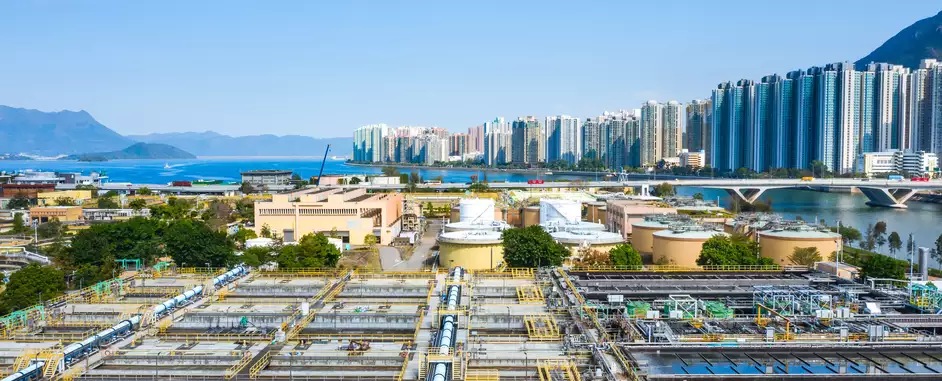Data and smart automation are transforming water management

The shifting availability of raw water, fluctuating customer demand and new societal expectations of sustainability make water management more challenging than ever. Utilities need flexible and dynamic solutions that let them innovate and adapt. Digitalization can provide that — but digital solutions require careful architecting to ensure they don’t add complexity instead of taking it away. That calls for a more open, flexible industrial internet of things (IIoT) approach.
As if growing demands weren’t enough, utilities are also under pressure to minimize capital expenditures. Often that means extending the life of assets, which can all too easily lead to a long-term under-investment and, ultimately, acute infrastructure hazards such as water and sewage overflows that squander valuable resources and put public health and the environment at risk.
Data and digitalization open a whole new world of capabilities
If water utilities had more access to key data, they’d be better able to predict potential issues, automate operations and optimize their systems. Staff would gain enhanced situational awareness to make better decisions, streamline operational processes, improve network operations and speed up response times.
When data is extended to customers, they also benefit — from timely access to useful consumption information that could identify leaks or other inefficiencies and inform decisions about appliance efficiency, conservation, recycling and storage.
A data-driven approach empowers utilities to digitally transform their businesses while cost-effectively adding value for customers. More open, flexible systems can be deployed to deliver efficient, standards-based visibility and control, enabling water management automation with the help of virtual information and contextual overlays. Smart water applications can be deployed across the operations lifecycle — for leakage control, pressure management, water efficiency, re-use of grey water, rainwater and effluent, water conservation and demand management.
These advances can massively increase productivity and speed up utilities’ adoption of emerging technologies to support more flexible, collaborative and adaptive business processes. But they can also bring serious headaches in the form of added complexity without the right architecture to support them — backed by artificial intelligence (AI) and machine learning to drive virtual asset operations with automated self-calibration, operation and sensor-to-sensor communication.
Why an open IIoT architecture makes the difference
Open IIoT architectures are modular, affordable, interoperable and future-proof. Deployed securely, they can accommodate emerging applications quickly and in an agile way, speeding up time to market for new solutions with economies of scale and extensibility to new use cases. Because they’re open, there’s no vendor lock-in, making collaboration easier with specialists and third parties — which can reduce development and implementation costs. They also facilitate better access to data, allowing customers to make smarter decisions about water consumption and waste.
The technologies behind IIoT networks continue to evolve. New open, standards-based Low Power Wide Area (LPWA) communications and flexible open digital platforms are especially exciting, enabling low-cost ubiquitous access to low power IIoT sensors and data. This is driving significant change within the water industry, making it possible for utilities to automate and optimize operations, provide new services, and support new applications and business models.
Cellular network narrowband (NB) IoT is also maturing and delivering even more benefits, including cost efficiency and enhanced battery life. The NB-IoT 3GPP open standard offers improved coverage and scalability, and extremely low power capabilities that deliver economies of scale, allowing it to be used in more meters and sensors. Based on licensed spectrum, it offers low interference, improved quality of service and security, and standards-based field network connectivity, creating more flexible, economic and sustainable operations.
IIoT solutions are enabling holistic water management and a fast transition from conventional operational approaches to smarter more adaptive networks.
An approach that’s right for the times
Right now, the world needs flexible and resilient water systems. As a participant in the Nokia’s Unlocking Industrial 5G Program (i.e. Nokia Veturi initiative) and via Smart Water Management project, Nokia is proving in a real-world scenario how new LPWA NB-IoT communications and open standards-based digital platforms can transform water utilities and deliver on the promise of IIoT and automation.
